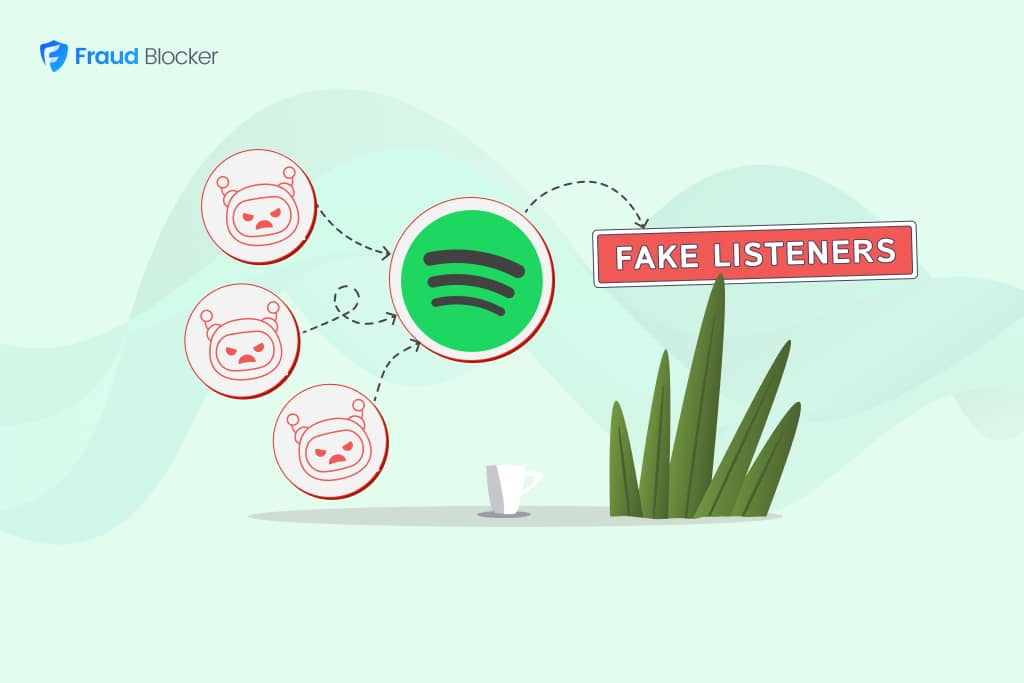
NEW New feature: Verify & block fake emails

We improve your ad performance by blocking click fraud and fake emails

Click fraud is costing advertisers billions in loses. Learn more here.

Click fraud is costing advertisers billions in loses. Learn more here.

Bots were responsible for 47.4% of all internet traffic in 2022, and they are only getting more sophisticated. Once upon a time, all bots could do was generate fake clicks and spam comments, but, they’ve gradually evolved into something far more insidious: Bot Farms.
These massive operations can spoof social media interactions, fill out lead forms with unbelievable accuracy, and replicate human browsing patterns. The result? Advertisers are losing millions annually, ($84 million in 2023 alone) on wasted PPC budgets, while companies are tricked into believing they’re reaching real customers.
But here’s the real kicker: this is just the beginning because Bot Farms are now integrating Artificial Intelligence and advanced protocols. But don’t panic just yet—there are strategies and tools that can help you fight back. Stick around as we break it all down.
Bot Farms are large-scale operations designed to deploy thousands of bots across the internet to mimic human behavior and mislead, defraud or steal from users.
These Bot Farms work by relying on a combination of hardware, software, and distributed networks. They are often hosted on dedicated servers and networks and can coordinate with precision.
It’s important to note that not all Bot Farms are bad; some can also be used to moderate content, scrape data, and even index web pages.
The primary goal of a Bot Farm may include the following.
Legitimate uses ✅:
Malicious operations ❌:
Learn more about how Bot Farms are used for click fraud.
Click Farms rely on human workers, while Bot Farms use automated software to execute large-scale tasks. However, both can be used to manipulate online metrics and perpetuate ad fraud, fake engagement, or fake lead generation.
Bot Farms use a multi-step process to automate their large-scale online activities. Whether operators use them for white or black hat purposes, their workflow usually follows this pattern:
Operators configure bots on dedicated servers, and cloud platforms to perform specific tasks like clicking ads, filling out forms, scraping data, etc.
Bots from these farms hide their identities by rotating IPs, spoofing device fingerprints and geo-locations.
Once live, Bot Farms swing into action by running tasks continuously whether that’s clicking ads or crawling web pages. They may cycle their operations to avoid triggering security measures.
Some Bot Farms need human oversight to solve CAPTCHAs and authentication challenges or adjust bot behaviour to avoid advanced fraud detection.
Once deployed, Bot Farms can generate profits through ad fraud and data theft or help with cybersecurity testing and process automation.
The signs of Bot Farms’ increasing sophistication and danger are everywhere. One that’s hard to miss is the surge in bot activity on social media with engagement from TikTok bots, Instagram bots, and even Facebook bots more popular than ever. Their replies are no longer painfully obvious and filled with emojis. Instead, they craft contextually relevant, human-like responses that will trick even the most observant users.
Take this example where Twitter Spam Bot accounts were exposed using simple prompt engineering.
But that’s just the tip of the iceberg when it comes to this new generation of Bot Farms. They are rewriting the playbook for fraud, using cutting-edge technology and hybrid strategies to operate undetected.
Here are some of the most sophisticated examples happening today.
One of the latest Bot Farm operations to emerge is Synthetic Echo, an AI-driven Ad Fraud scheme that uses programmatic advertising and fake media websites to steal millions from advertisers.
Early this year, researchers uncovered the operation, which consisted of over 200 fake media sites impersonating legitimate publishers like BBC, NBC, and ESPN. Synthetic Echo used these AI-generated fake news sites to trick users and advertisers, inflating ad impressions with real human traffic.
When users land on the fake websites, they unknowingly boost ad impressions and generate revenue for the fraudsters through clicks.
One of the most alarming advancements is the integration of large language models (LLMs) like GPT-based systems into Bot Farm operations. These AI-powered bots can create near-perfect sentences, hold conversations, and copy genuine interactions like the one we referenced earlier.
In 2024, the U.S. Department of Justice, alongside Canada and the Netherlands, disrupted a Russian AI-powered Bot Farm that was spreading pro-Russian propaganda at scale. The operation relied on AI software called Meliorator to create thousands of fake American personas.
They then deployed these personas to X where they engaged in political discussions, spread anti-Ukraine narratives, and manipulated conversations on X.
Geo-spoofing is not new, but Bot Farms have taken it to the next level over the past few years. Bots now use advanced techniques to mimic real user traffic from specific locations, making them harder to detect with traditional fraud filters.
For example, a bot might fake being in New York by imitating the browsing patterns of users in that region. This includes replicating their time zone behaviors—doom scrolling TikTok in the middle of the night, checking the news in the morning, etc—and using device fingerprinting that aligns with the devices usually found in that area.
This tactic works really well against location-based fraud detection tools, allowing Bot Farms to blend seamlessly into legitimate traffic. For advertisers, this means your ads are being clicked on by users that appear as real as any other user, but that will never convert.
Bot Farms are also using a hybrid model, where bots will handle tasks that require volume and a large amount of input, while humans handle the precision based tasks.
We’ve seen behaviour like this with Streaming Farms where users set up dozens of mobile phones and stream music repeatedly to inflate the play count.
Another example of this, and one that’s much more damaging to advertisers, is the use of click bots to drain PPC budgets or form bots to flood lead-generation forms with fake data. Humans then follow up to bypass CAPTCHAs and refine submissions, making them appear real.
As Bot Farms grow more sophisticated, you need better strategies and tools to protect your PPC campaigns. In this section, we’ve outlined a range of solutions that not only help identify but also counteract the activities of this new generation of Bot Farms.
Proactive defense measures like IP filtering, device fingerprinting, and real-time monitoring are essential for identifying and blocking bot activity before it causes harm.
Combined, these measures offer a competent network shield that can block bot action while allowing legitimate users through.
Honeypots are tools designed to bait and trap bots. They plant invisible fields on forms or add fake links, and attract bots without impacting human users. Advanced honeypots now take it further by generating decoys based on user interactions, making it harder for bots to recognize them.
For example, a honeypot might insert a hidden CAPTCHA field into a form. If a bot fills it out, it’s instantly flagged and blocked. Because the trap continuously adapts, it can trip up even advanced bots, creating an effective security system.
Read More: How bots are solving CAPTCHAs
For bots targeting account takeovers or data scraping, MFA is a simple yet effective defense. MFA requires users to provide two or more verification factors, such as a password and a one-time code sent to a phone or email.
MFA disrupts bots that use stolen credentials to break in. Plus, these attacks tend to happen at scale so operators will struggle to hit all the authentication points reliably. Enabling MFA on all your user-facing systems can drastically reduce the risks of bot-driven fraud and data theft.
Bot Farms often run credential stuffing attacks, where they use breached login details to gain access to user accounts. In addition to MFA, you could:
Ad fraud is projected to hit $172 billion by 2028 , consuming 23% of marketing budgets. And even though Google Ads block fraudulent clicks, our research shows 11.7% of clicks are still invalid —costing businesses millions.
This is why PPC experts trust Fraud Blocker to protect their campaigns. Our solution adds an extra layer of protection, using real-time fraud detection and behavioral analysis to block bot-driven clicks before they drain your budget. The result? Campaigns with higher-quality clicks, better ROI, and cleaner analytics.
Bot farms are evolving at an alarming pace, integrating AI and all kinds of automation. That means click bots will continue to drain ad budgets and as form bots pollute lead data for marketers.
Now more than ever, your business needs advanced, adaptive solutions that can detect and block fraudulent activity. Don’t let Bot Farms drain your marketing dollars. Sign up for a free 7-day trial of Fraud Blocker and protect your campaigns today.

ABOUT THE AUTHOR
Matthew Iyiola
Matthew is the resident content marketing expert at Fraud Blocker with several years of experience writing about ad fraud. When he’s not producing killer content, you can find him working out or walking his dogs.


